A Novel Love Wave Mode Sensor Waveguide Layer with Microphononic Crystals
Abstract
:Featured Application
Abstract
1. Introduction
2. Materials and Methods
2.1. Eigen Mode Analysis
2.2. Transmission Parameters Analysis
3. Experiments and Results
3.1. Fabrication of Devices and Experimental Setup
3.2. Liquid Environmental Experiment
4. Conclusions
Author Contributions
Funding
Informed Consent Statement
Data Availability Statement
Conflicts of Interest
References
- Wu, S.; Lin, Z.-X.; Ro, R.; Lee, M.-S. Rayleigh and shear horizontal surface acoustic properties of (100) ZnO films on silicon. IEEE Trans. Ultrason. Ferroelectr. Freq. Control. 2010, 57, 1237–1239. [Google Scholar] [CrossRef]
- Ro, R.; Lee, R.; Lin, Z.-X.; Sung, C.-C.; Chiang, Y.-F.; Wu, S. Surface acoustic wave characteristics of a (100) ZnO/(100) AlN/diamond structure. Thin Solid Film. 2013, 529, 470–474. [Google Scholar] [CrossRef]
- Länge, K.; Rapp, B.; Rapp, M. Surface acoustic wave biosensors: A review. Anal. Bioanal. Chem. 2008, 391, 1509–1519. [Google Scholar] [CrossRef] [PubMed]
- Yongha, S.; Songbin, G. Wideband RF filters using medium-scale integration of Lithium Niobate laterally vibrating resonators. IEEE Electron Device Lett. 2017, 38, 387–390. [Google Scholar]
- Du, J.; Harding, G.L.; Collings, A.F.; Dencher, P.R. An experimental study of Love-wave acoustic sensors operating in Liquids. Sens. Actuators A 1997, 60, 54–61. [Google Scholar] [CrossRef]
- Harding, G.L.; Du, J.; Dencher, P.R.; Barnett, D.; Howe, E. Love wave acoustic immunosensor operating in liquid. Sens. Actuators A 1997, 61, 279–286. [Google Scholar] [CrossRef]
- Gizeli, E.; Goddard, N.J.; Lowe, C.R.; Stevenson, A.C. A Love plate biosensor utilizing a polymer layer. Sens. Actuators B 1992, 6, 131–137. [Google Scholar] [CrossRef]
- Oh, H.; Wang, W.; Lee, K.; Yang, S. Development of wireless Love wave biosensor on 41°YXLiNbO3. Smart Mater. Struct. 2009, 18, 1–9. [Google Scholar] [CrossRef] [Green Version]
- Oh, H.; Wang, W.; Lee, K.; Yoon, H.C.; Yang, S. Wirelessly driven and battery-free Love wave biosensor based on DNP immobilization. Jpn. J. Appl. Phys. 2009, 48, 06FJ0-1-7. [Google Scholar] [CrossRef]
- Mitsakakis, K.; Tserepi, A.; Gizeli, E. Integration of microfluidics with a love wave sensor for the fabrication of a multisample analytical mi-crodevice. J. Microelectromechanical Syst. 2008, 17, 1010–1019. [Google Scholar] [CrossRef]
- Kovacs, G.; Vellekoop, M.; Haueis, R.; Lubking, G.; Venema, A. A love wave sensor for (bio)chemical sensing in liquids. Sensors Actuators A Phys. 1994, 43, 38–43. [Google Scholar] [CrossRef]
- Talbi, A.; Soltani, A.; Rumeau, A.; Taylor, A.; Drbohlavova, L.; Klimša, L.; Kopeček, J.; Fekete, L.; Krecmarova, M.; Mortet, V. Simulations, fabrication, and characterization of diamond-coated Love wave-type surface acoustic wave sensors. Phys. Status Solidi A 2015, 212, 2606–2610. [Google Scholar] [CrossRef]
- Cinzia, C.; Muhanmmad, H. A theoretical study of Love wave sensors based on ZnO-Glass layered structures for application to liquid envi-ronment. Biosensors 2016, 6, 59. [Google Scholar]
- Chu, S.-Y.; Water, W.; Liaw, J.-T. An investigation of the dependence of ZnO film on the sensitivity of Love mode sensor in ZnO/quartz structure. Ultrasonics 2002, 41, 133–139. [Google Scholar] [CrossRef]
- Panth, M.; Cook, B.; Zhang, Y.; Ewing, D.; Tramble, A.; Wilson, A.; Wu, J. High-Performance Strain Sensors Based on Vertically Aligned Piezoelectric Zinc Oxide Nanowire Array/Graphene Nanohybrids. ACS Appl. Nano Mater. 2020, 3, 6711–6718. [Google Scholar] [CrossRef]
- Du, J.; Harding, G.; Ogilvy, J.; Dencher, P.; Lake, M. A study of Love-wave acoustic sensors. Sens. Actuators A Phys. 1996, 56, 211–219. [Google Scholar] [CrossRef]
- Palfreyman, J.; Love, D.; Philpott, A.; Vyas, K.; Cimorra, C.; Mitrelias, T.; Barnes, C.; Muir, L.; Cook, G.; Keynes, R. Hetero-Coated Magnetic Microcarriers for Point-Of-Care Diagnostics. IEEE Trans. Magn. 2012, 49, 285–295. [Google Scholar] [CrossRef]
- Francis, L.A.; Friedt, J.M.; Bartic, C.; Campitelli, A. An SU-8 liquid cell for surface acoustic wave biosensors. Proc. SPIE Int. Soc. Opt. Eng. 2004, 5455, 353–363. [Google Scholar]
- Sigalas, M.; Economou, E. Elastic and acoustic wave band structure. J. Sound Vib. 1992, 158, 377–382. [Google Scholar] [CrossRef]
- Sun, J.H.; Wu, T.T. Guided surface acoustic waves in phononic crystal waveguides. In Proceedings of the 2006 IEEE Ultrasonics Symposium, Vancouver, BC, Canada, 3–6 October 2006; pp. 673–676. [Google Scholar]
- Yoon, J.; Mayer, M.; Ebner, T.; Wagner, K.; Wixforth, A. Advanced 2D periodic array and full transversal mode suppression. In Proceedings of the IEEE 2013 Joint UFFC, EFTF and PFM Symposium, Prague, Czech Republic, 21–25 July 2013; pp. 733–736. [Google Scholar] [CrossRef]
- Yahui, T.; Honglang, L.; Wenjia, T.; Yabing, K.; Jingling, C.H.; Shitang, H. A weighted waveguide for surface acoustic waves based on two-dimensional piezoelectric phononic crystals. In Proceedings of the 2014 IEEE Symposium on Piezoelectricity, Acoustic Waves, and Device Applications (SPAWDA), Beijing, China, 30 October–2 November 2014; pp. 375–378. [Google Scholar]
- Solal, M.; Gratier, J.; Kook, T. A SAW resonator with two-dimensional reflectors. IEEE Trans. Ultrason. Ferroelectr. Freq. Control. 2010, 57, 30–35. [Google Scholar] [CrossRef]
- Yudistira, D.; Boes, A.; Djafari-Rouhani, B.; Pennec, Y.; Yeo, L.; Mitchell, A.; Friend, J.R. Monolithic Phononic Crystals with a Surface Acoustic Band Gap from Surface Phonon-Polariton Coupling. Phys. Rev. Lett. 2014, 113, 215503. [Google Scholar] [CrossRef] [Green Version]
- Yahui, T.; Honglang, L.; Yabing, K.; Ce, Y.; Shitang, H. P-Matrix analysis of surface acoustic waves in piezoelectric phononic crystals. Trans. Ultrason. Ferroelectr. Freq. Control. 2016, 63, 757–763. [Google Scholar]
- Juarez-Martinez, G.; Chiolerio, A.; Allia, P.; Poggio, M.; Degen, C.L.; Zhang, L.; Nelson, B.J.; Dong, L.; Iwamoto, M.; Buehler, M.J.; et al. Microfludic Whole-Cell Biosensor. In Encyclopedia of Nanotechnology; Springer: Dordrecht, The Netherlands, 2012; pp. 1415–1419. [Google Scholar] [CrossRef]
- Yamanishi, Y.; Feng, L.; Arai, F. On-Demand and size-controlled production of emulsion droplet in microfludic devices. In Proceedings of the 2010 IEEE 23rd International Conference on Micro Electro Mechanical Systems (MEMS), Hong Kong, China, 24–28 January 2010; pp. 1087–1090. [Google Scholar] [CrossRef]
- Bui, T.H.; Duc, T.B.; Duc, T.C. Microfluidic injector simulation with fsaw sensor for 3-D integration. IEEE Trans. Instrum. Meas. 2015, 64, 849–856. [Google Scholar]
- Tobolka, G. Mixed Matrix Representation of SAW Transducers. IEEE Trans. Sonics Ultrason. 1979, 26, 426–427. [Google Scholar] [CrossRef]
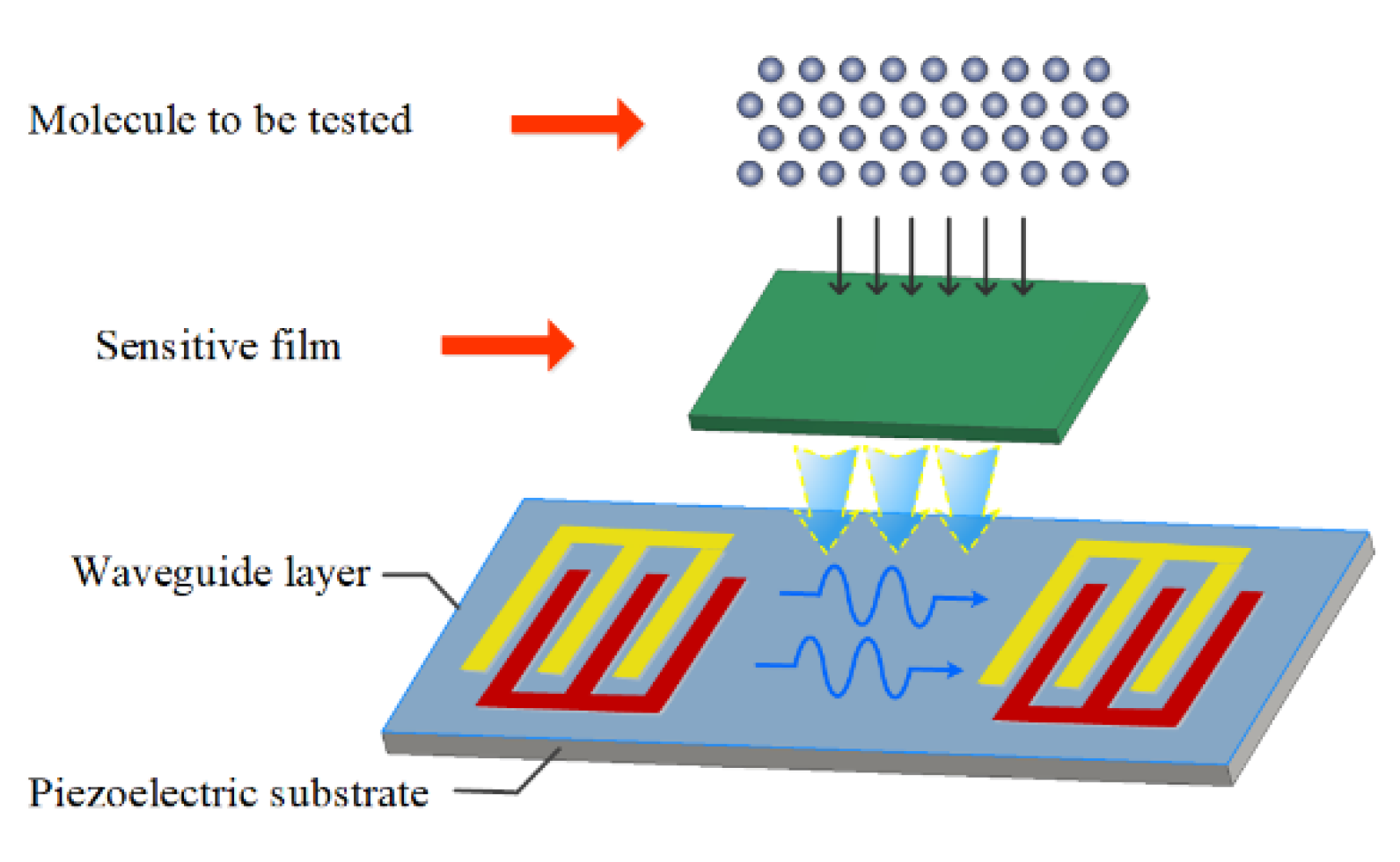
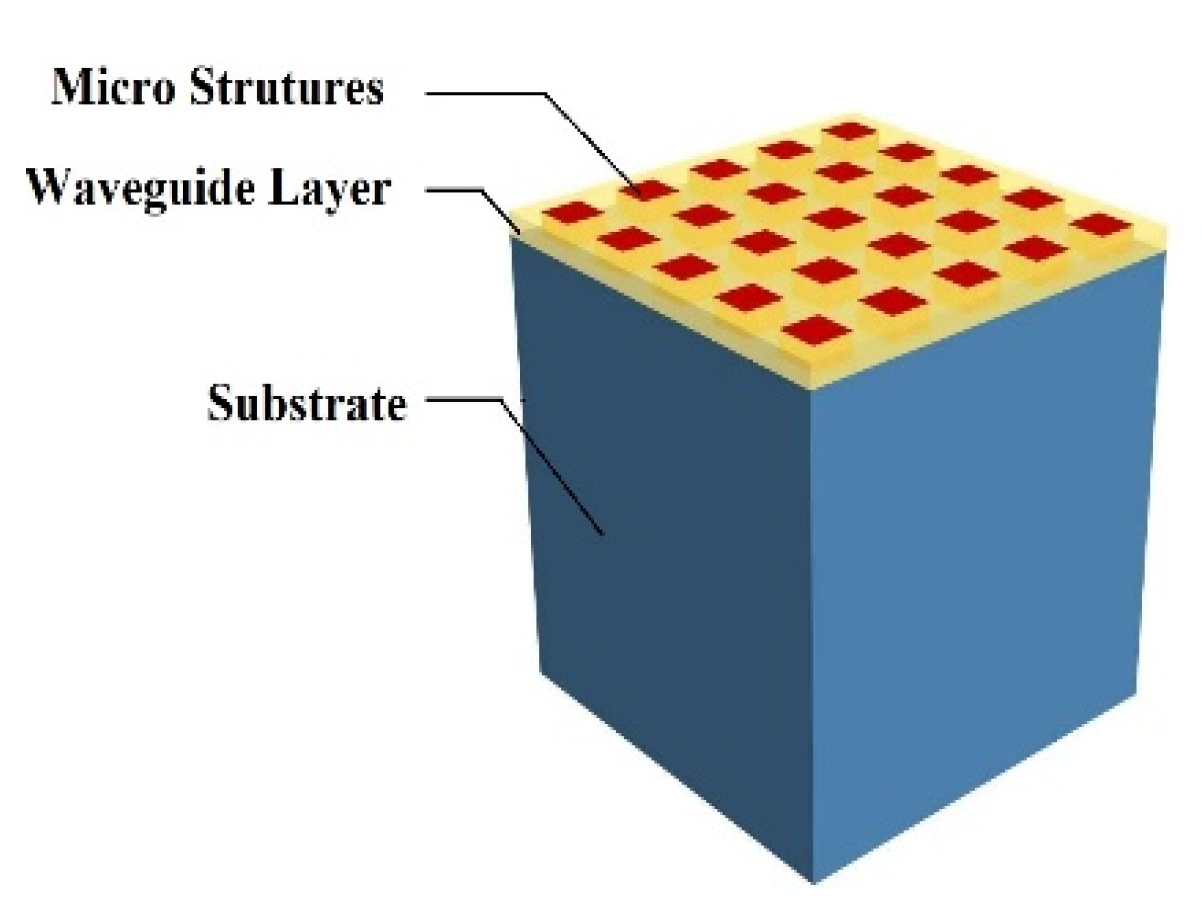
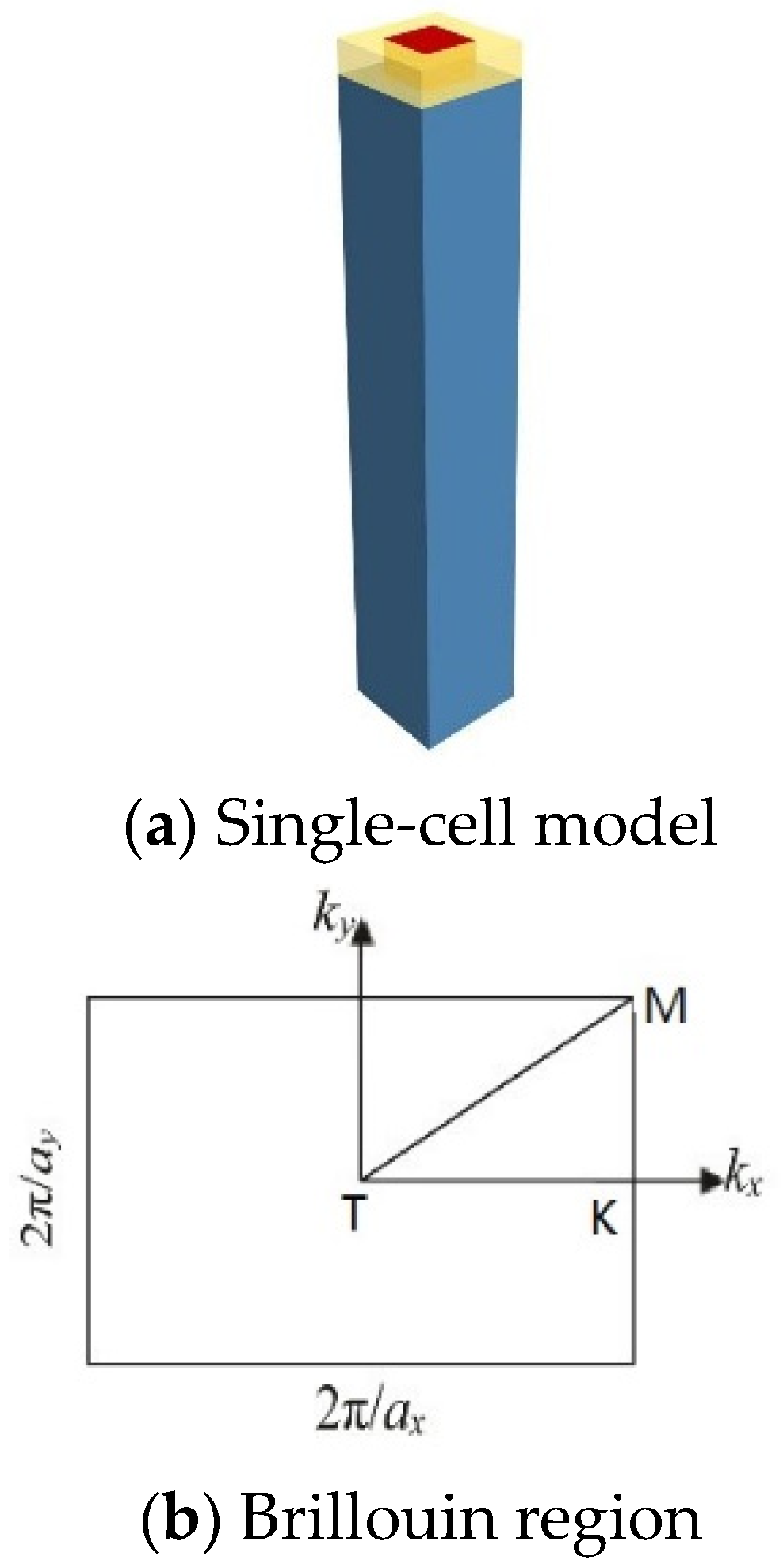
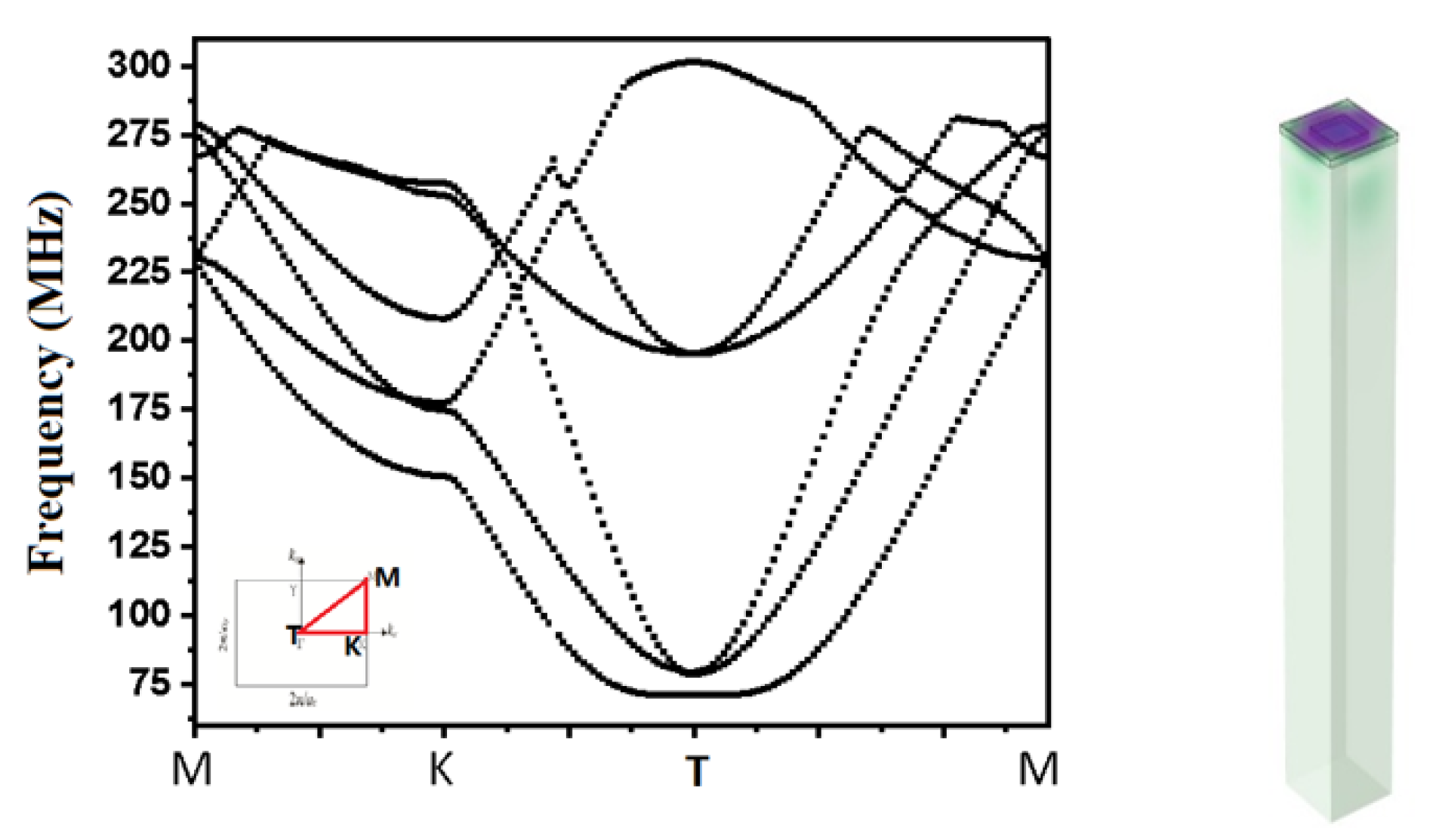

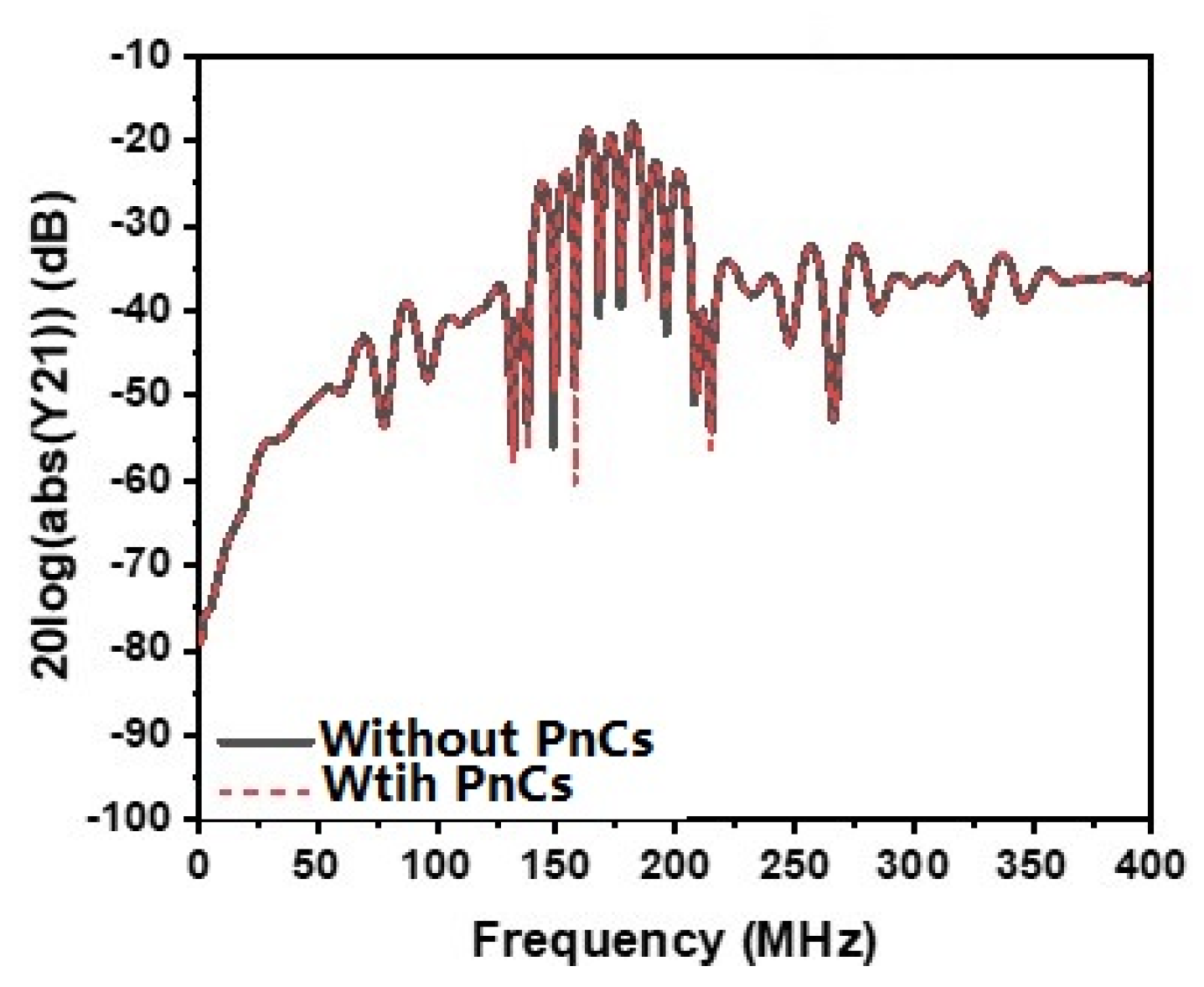

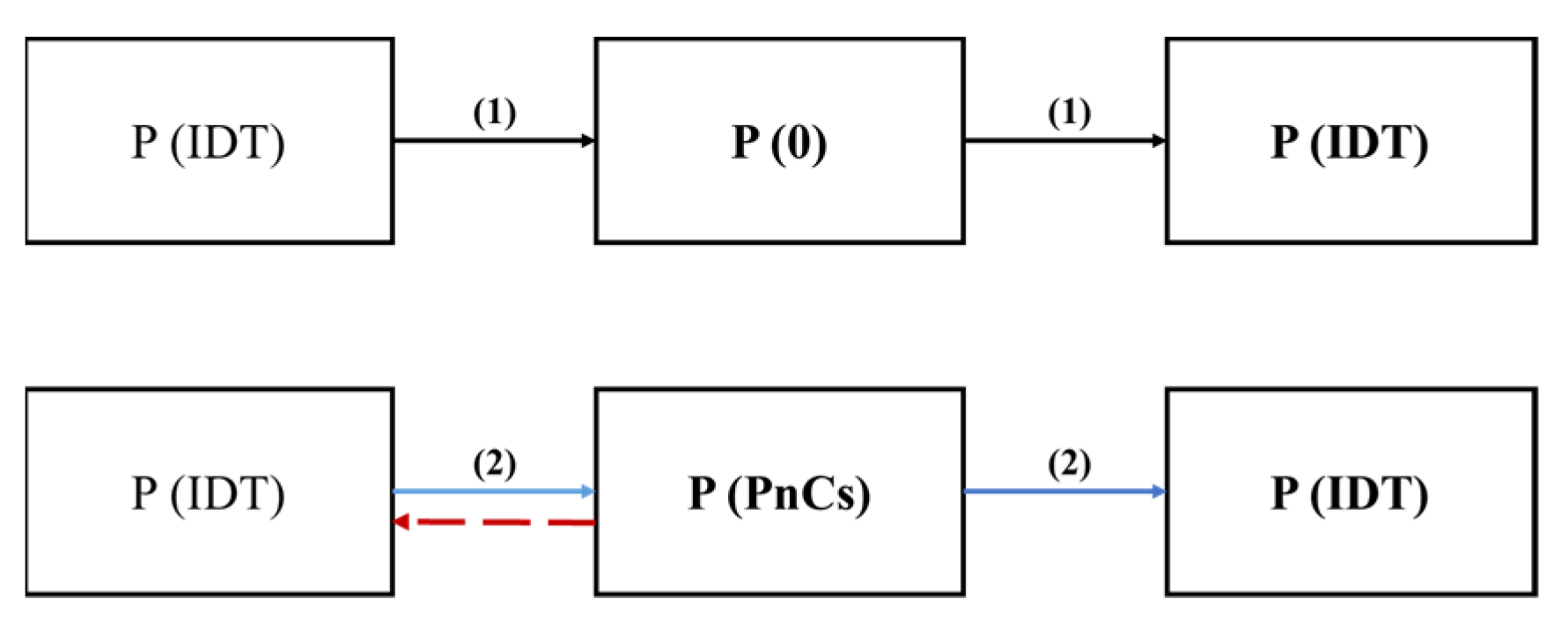


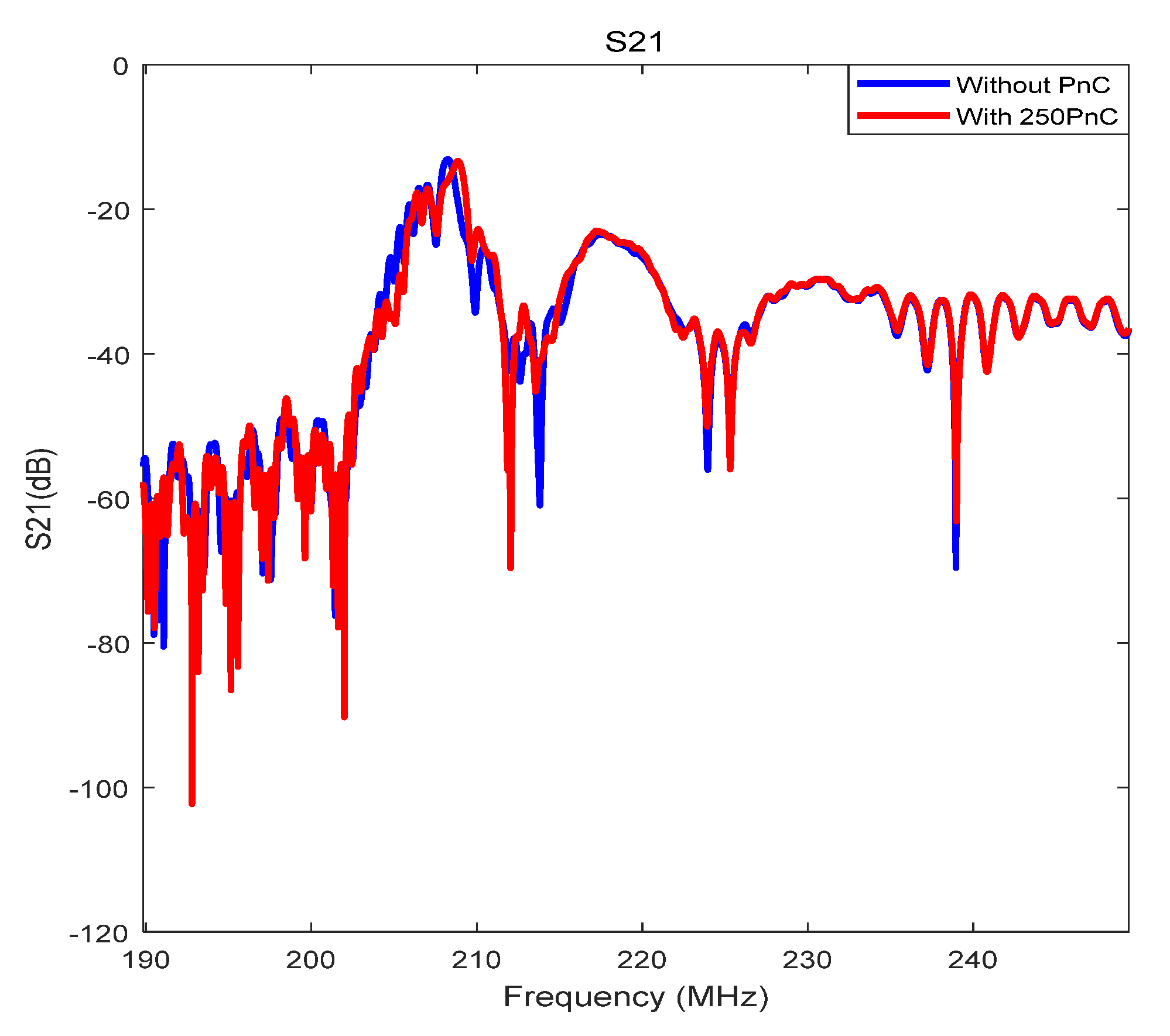
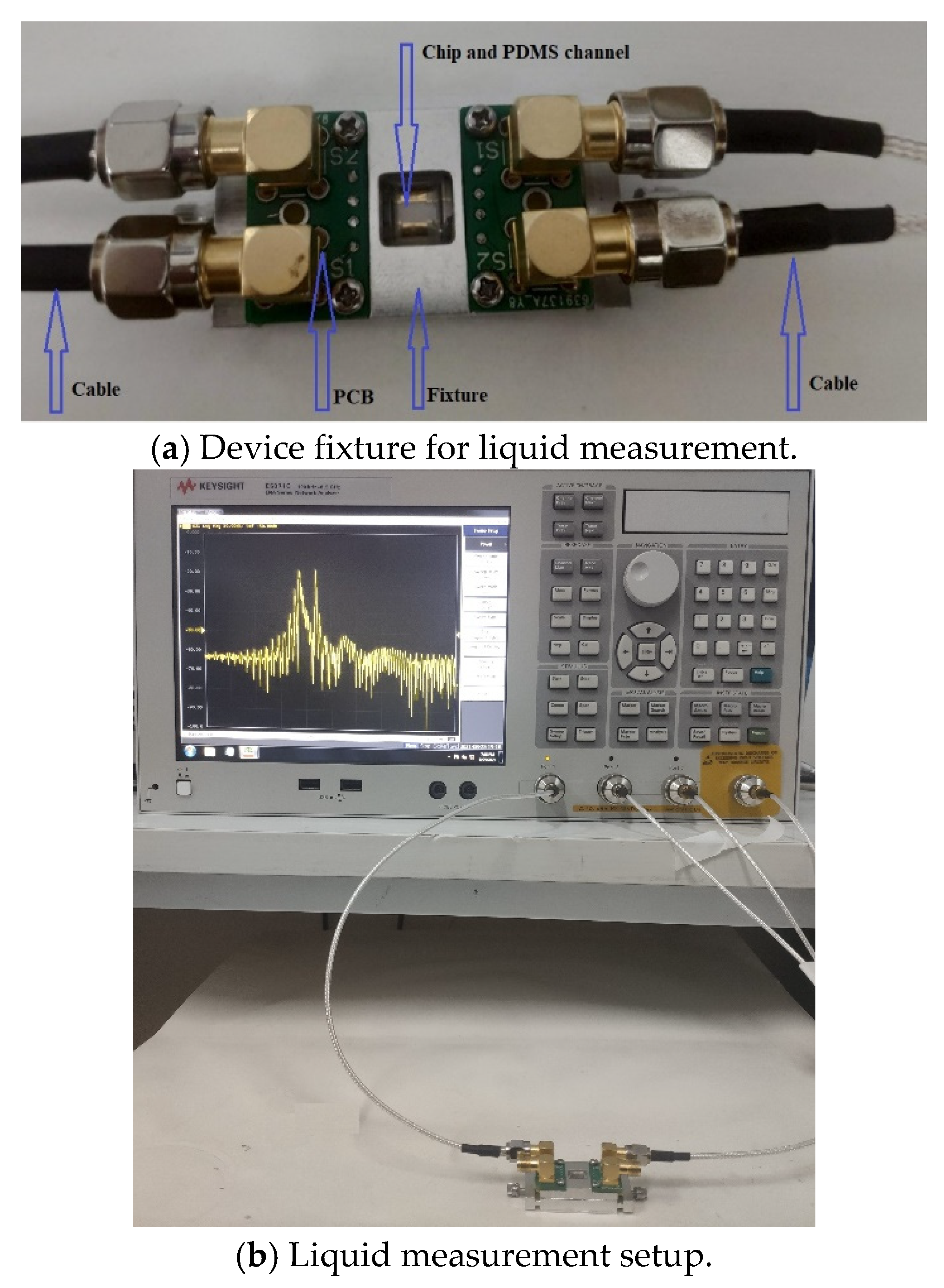

| Type | Original | Bonding PDMS | Adding 2 µL PBS | Adding 5 µL PBS | Adding 10 µL PBS |
|---|---|---|---|---|---|
| Traditional structure | 208.205 | 208.190 | 208.222 | 208.266 | 208.281 |
| New micro PnCs | 208.901 | 208.883 | 208.922 | 208.970 | 208.988 |
Publisher’s Note: MDPI stays neutral with regard to jurisdictional claims in published maps and institutional affiliations. |
© 2021 by the authors. Licensee MDPI, Basel, Switzerland. This article is an open access article distributed under the terms and conditions of the Creative Commons Attribution (CC BY) license (https://creativecommons.org/licenses/by/4.0/).
Share and Cite
Tian, Y.; Li, H.; Chen, W.; Lu, Z.; Luo, W.; Mu, X.; Wang, L. A Novel Love Wave Mode Sensor Waveguide Layer with Microphononic Crystals. Appl. Sci. 2021, 11, 8123. https://doi.org/10.3390/app11178123
Tian Y, Li H, Chen W, Lu Z, Luo W, Mu X, Wang L. A Novel Love Wave Mode Sensor Waveguide Layer with Microphononic Crystals. Applied Sciences. 2021; 11(17):8123. https://doi.org/10.3390/app11178123
Chicago/Turabian StyleTian, Yahui, Honglang Li, Wencan Chen, Zixiao Lu, Wei Luo, Xihui Mu, and Litian Wang. 2021. "A Novel Love Wave Mode Sensor Waveguide Layer with Microphononic Crystals" Applied Sciences 11, no. 17: 8123. https://doi.org/10.3390/app11178123
APA StyleTian, Y., Li, H., Chen, W., Lu, Z., Luo, W., Mu, X., & Wang, L. (2021). A Novel Love Wave Mode Sensor Waveguide Layer with Microphononic Crystals. Applied Sciences, 11(17), 8123. https://doi.org/10.3390/app11178123







